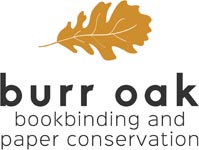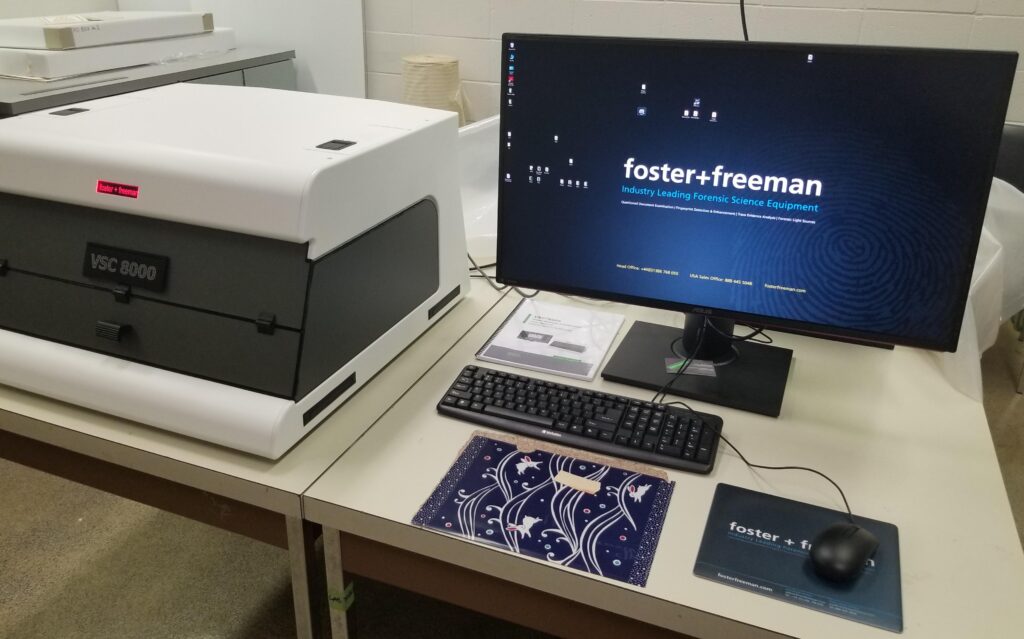
This past week I’ve made use of the Foster Freeman VSC 8000 (pictured above) quite a bit. I’m lucky to have access to this machine and I really enjoyed learning how to use it. It’s marketed for use in forensics, but we have one in our conservation lab for investigating heritage objects. Here are some interesting images taken with the VSC 8000 that I’d like to share with you.
This image is at 16x magnification. It’s a letter from 1871 written in iron gall ink. Perhaps a fingerprint by the author or recipient was left behind?
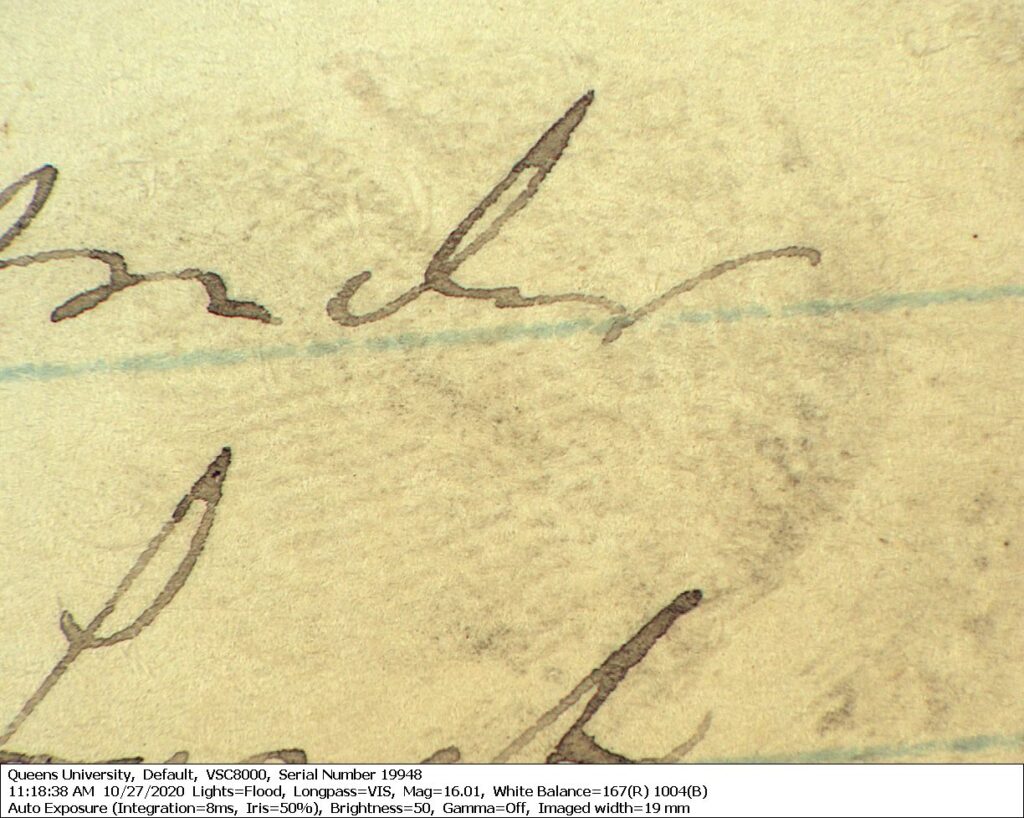
Pictured below, this is the same iron gall ink letter as above, but seen under UV florescence. You can clearly see some tidelines caused by liquid damage as well as some other interesting stains fluorescing in yellow and even those dark blue dots, which are not visible in normal light.
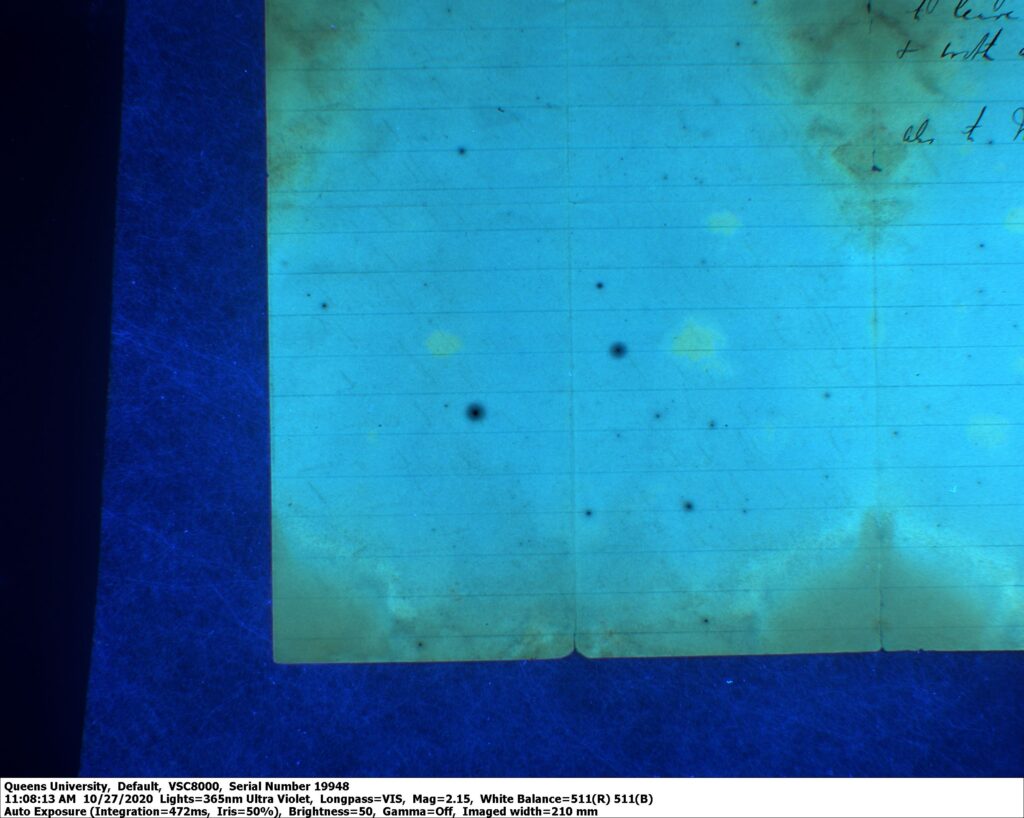
The next four images were captured at various locations on a very contorted parchment diploma. These images have been magnified 42x and at this magnification you can see just how fragile the ink looks as it rests on the surface of the parchment.
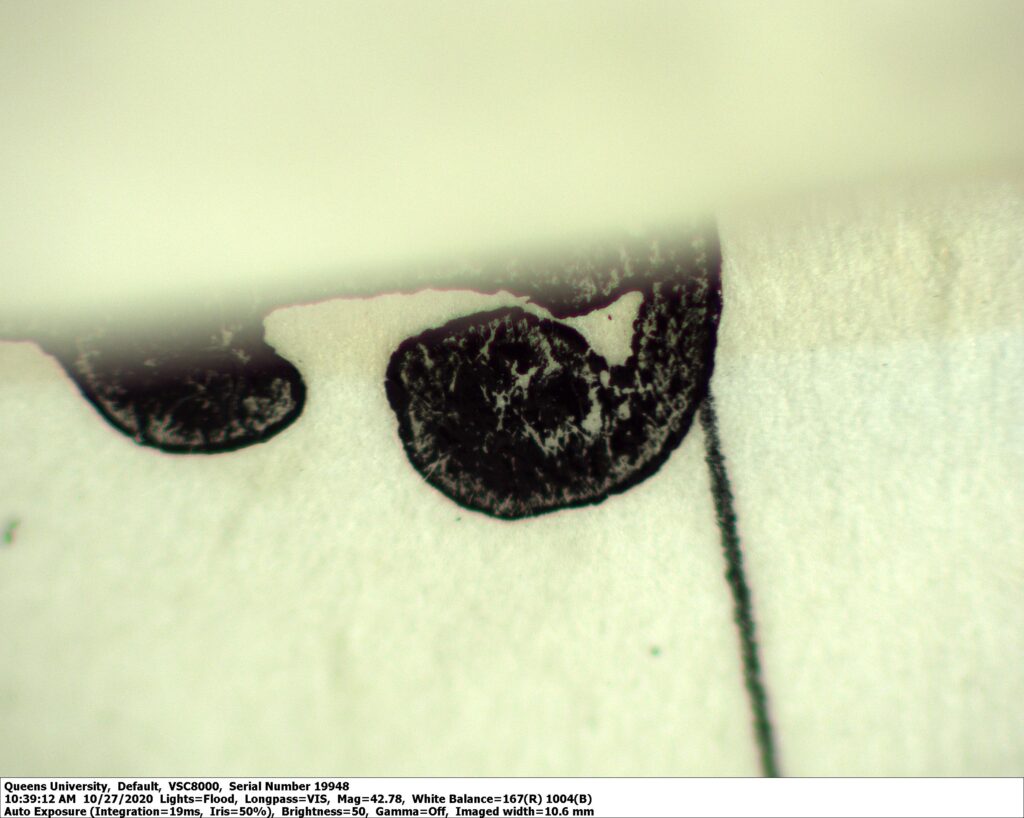
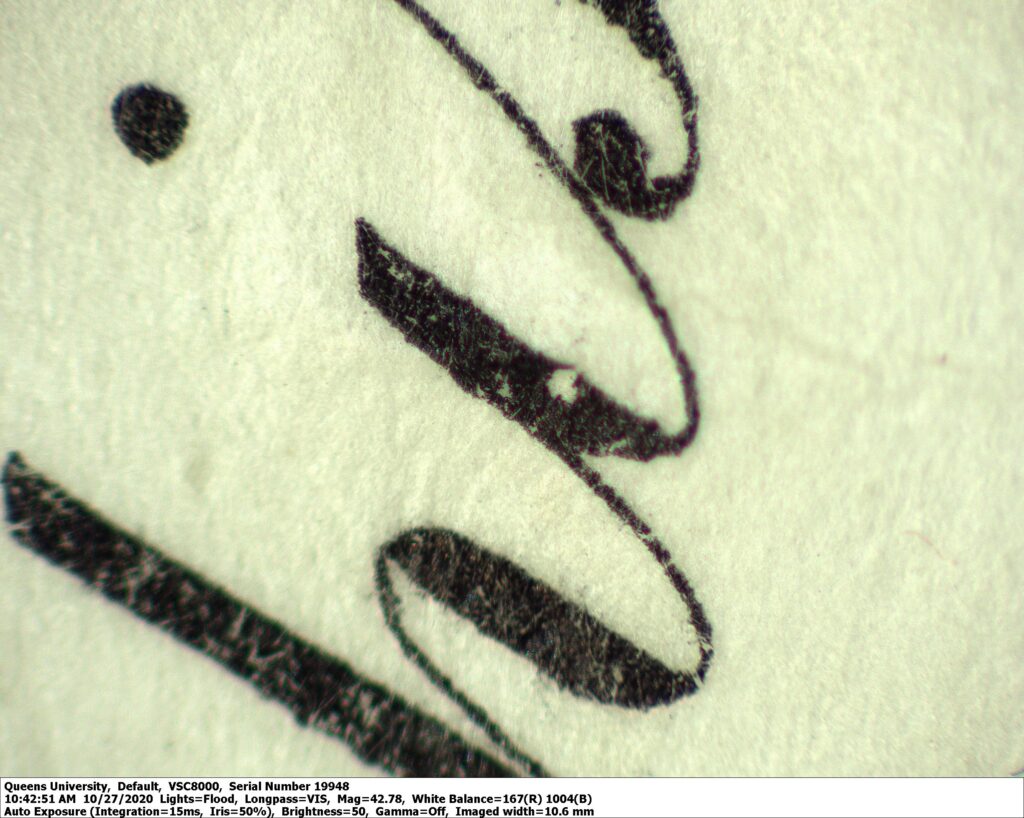
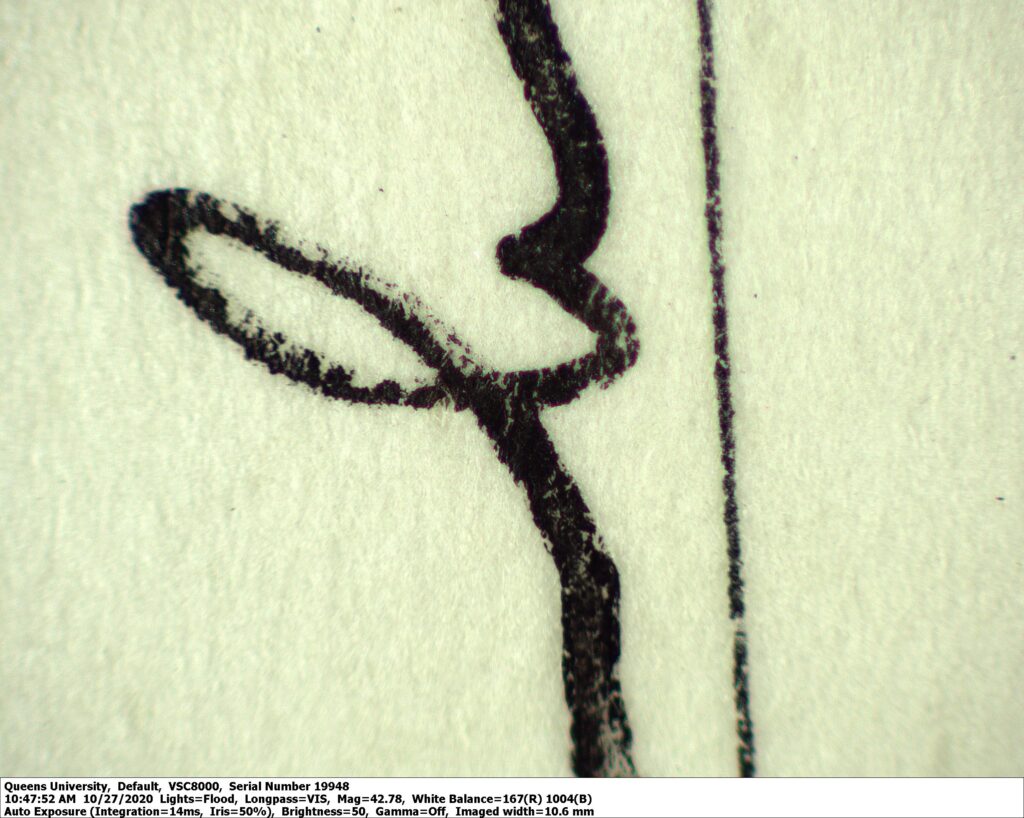
This last image is a detail of an orange stamp of the Queen’s University crest on the parchment. Isn’t it pretty?
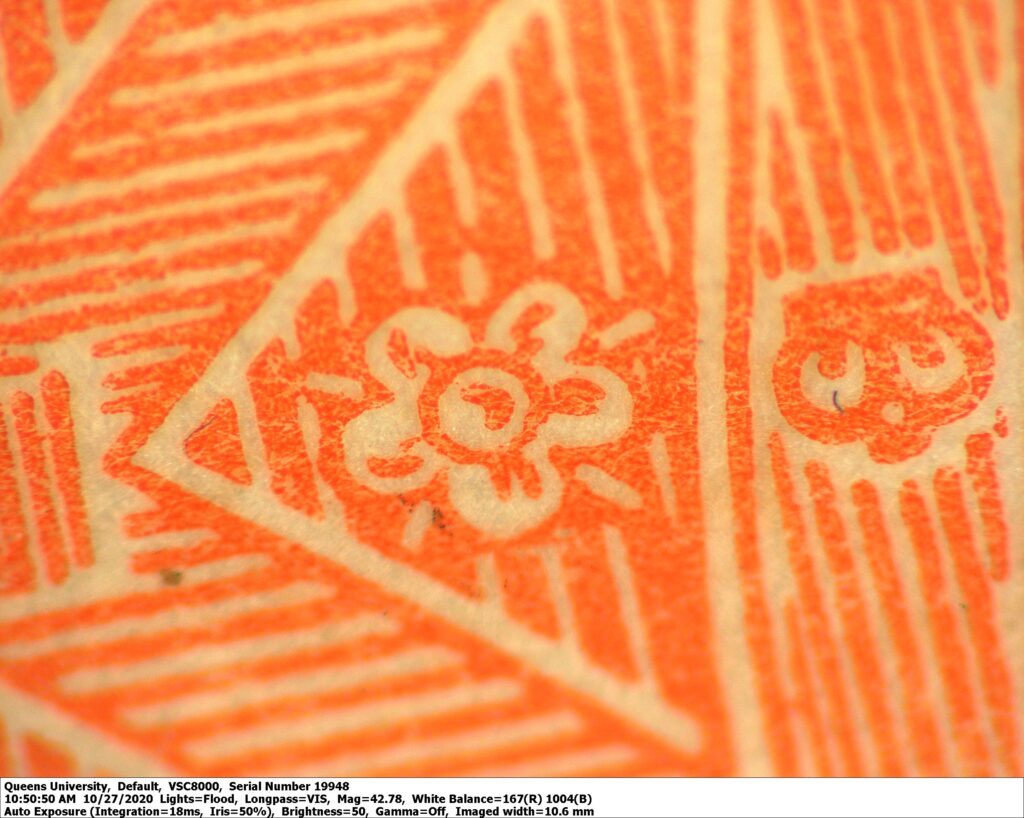
Lastly, a 42x and 142x magnification of a small piece that had been detached from a WW2 propaganda poster. The poster was manufactured with a gravure printing method. The detail is amazing!
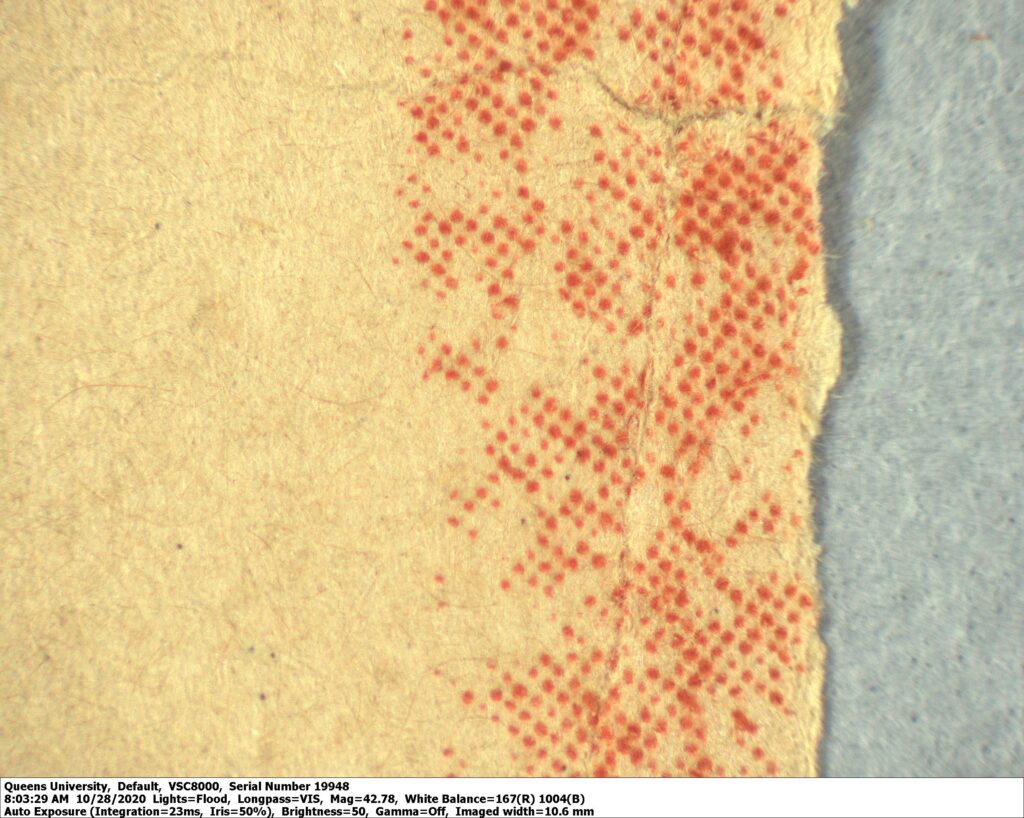
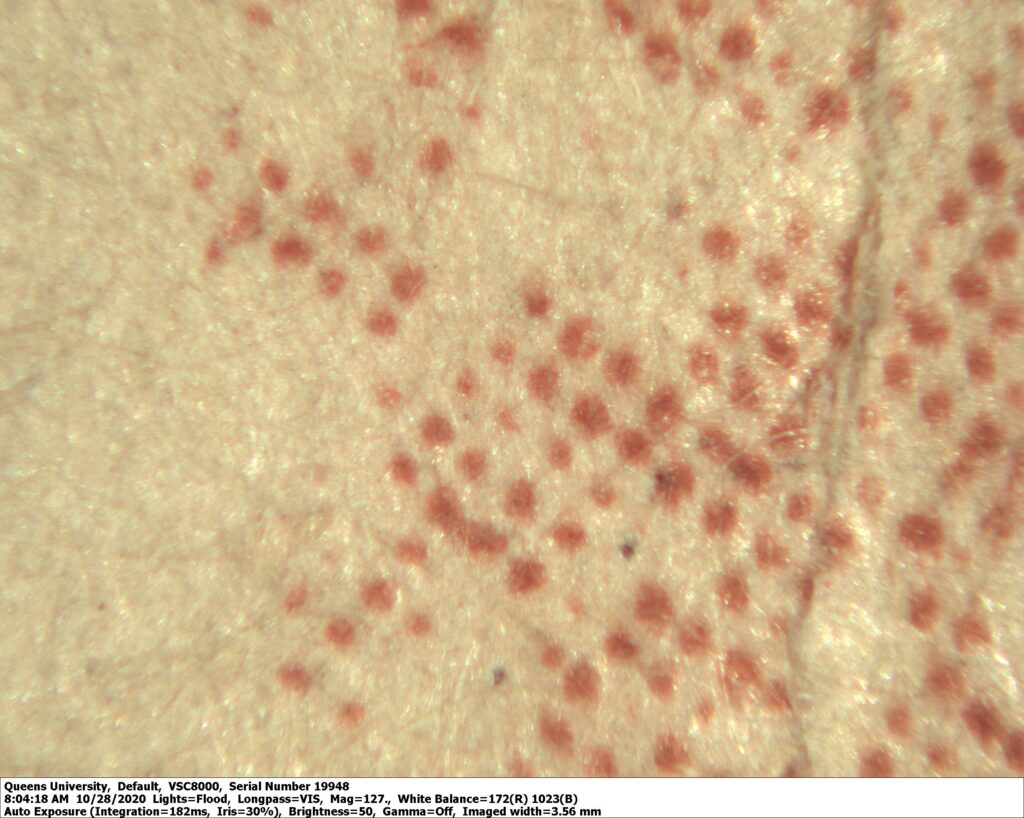
The VSC 8000 also allows for raking light, transmitted light, and infrared, all of which I used for another project I am working on for my term paper. Look for those images in a future post.
